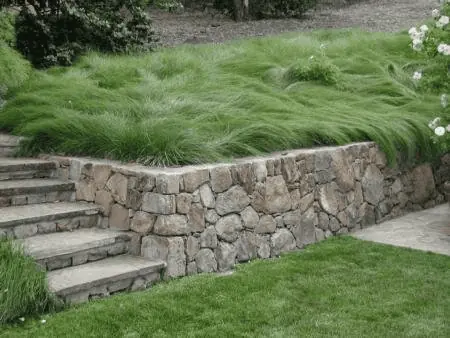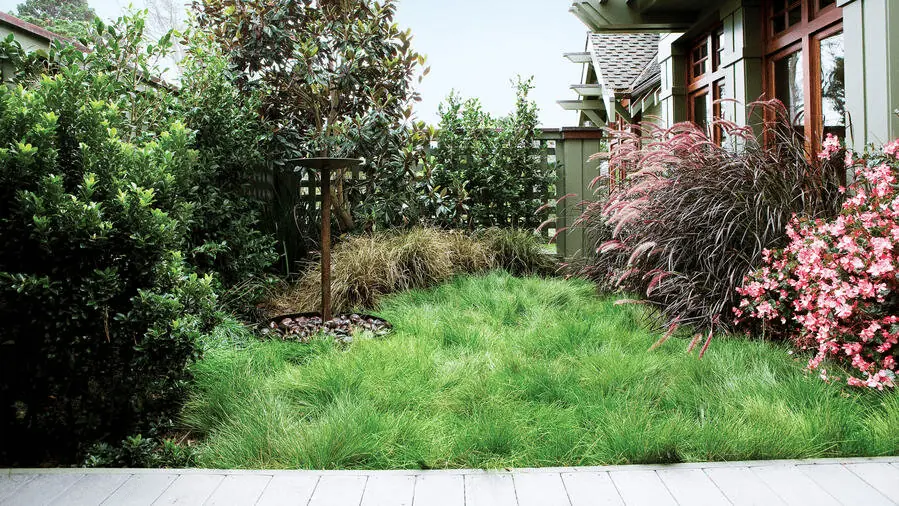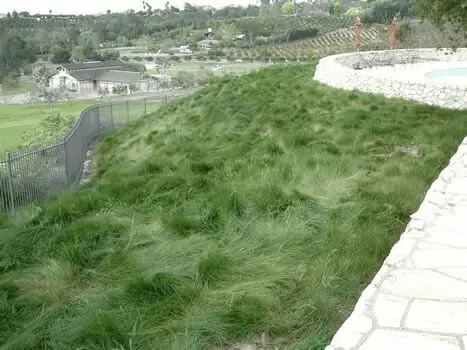Does spending countless hours mowing and maintaining your lawn feel tiring yet? If so, you’re not alone. Maintaining a traditional lawn can be a tedious and time-consuming task.
From mowing to fertilizing and watering, keeping your lawn healthy and green can be a constant battle. Many homeowners seek alternatives to the traditional, high-maintenance lawn.
That’s where No Mow Grass comes in. No Mow Grass is a type of grass that requires very little maintenance and can be an excellent option for those who want a beautiful lawn without all the work.
Many homeowners are turning to No Mow Grass as an alternative. But is No Mow Grass right for you? This article covers the benefits and cons of No Mow Grass and helps you decide if it’s the best choice for your lawn.
Pros of No Mow Grass
As the name indicates, this grass type requires little to no mowing, making it a popular choice for homeowners looking to save time, money, and energy. But that’s not all – no mow grass has many other benefits, making it an attractive option for those seeking a low-maintenance and eco-friendly lawn.
Below are some of those benefits:
Aesthetic Purpose
No Mow Grass can be as beautiful as traditional grass. It comes in various colors and textures, and it can create a natural-looking, serene environment in your yard.

Better for Wildlife
No Mow Grass is a great option for those who want to support wildlife in their area. It can provide food and habitat for many animals, including birds, bees, and butterflies.
Longevity
No mow grass can last for many years without the need for replanting. Traditional lawn grass may need to get replanted every few years due to damage, disease, or other issues. By choosing no-mow grass, homeowners can enjoy a long-lasting, durable lawn that requires minimal upkeep.
Low Maintenance
One of the most significant advantages of No Mow Grass is that it requires very little maintenance. It doesn’t need to get mowed or fertilized as often as traditional grass. This feature means you’ll have more time to do other things you enjoy and save money on maintenance costs.
Safe for the Environment
Because No Mow Grass uses fewer resources than conventional grass, it is terrific for the environment. It consumes less water, fertilizer, and pesticides. Every aspect helps to reduce their impact on the environment.
Saves Time and Money
Since No Mow Grass requires less maintenance, it can save time and money. You won’t have to invest as much time or money on lawn care, which can be significant savings in the long run.
Cons of No Mow Grass
While not mowing grass has many benefits, it’s not a perfect solution for every lawn. Before switching from traditional lawn grass to no-mow grass, there are some drawbacks to consider.
Before choosing this option, we will explore the cons of no-mow grass and what homeowners should know.
Appearance

Mow grass may have a uniform, well-manicured look different from traditional lawn grass. It can have a more natural, organic look, which may not appeal to everyone.
Some varieties can be wild and unkempt, which may differ from everyone’s liking. This style can be a personal preference, but it’s important to be aware before switching.
Initial Cost
The initial cost of no-mow grass can be higher than traditional lawn grass. This feature is because no mow grass requires a specific mix of grass seeds and can sometimes be more difficult to find than conventional grass seeds. The installation process may also be more involved, which can add to the cost.
Limited Selection
No mow grass is still a new concept, so there is a vast restriction on selecting grass varieties. This seclusion means homeowners may not have many options when selecting their grass type. While this may not concern some, others may prefer a more diverse selection of grass types.
Maintenance
While no mow grass is low maintenance, it’s not maintenance-free. Some varieties may still need occasional mowing or trimming to keep them looking their best. Homeowners may also need to remove any weeds or other unwanted plants from the lawn to prevent them from taking over.
May Take Time to Establish
No Mow Grass may take longer to establish than traditional grass. The grass may take about three years to mature and develop a dense root system.
Seed Viability
No mow grass seeds may have a shorter shelf life than traditional grass seeds. This feature means homeowners may need to buy new seeds more often to maintain their lawns. It’s important to store the seeds well to extend their viability.
Choosing the Right No Mow Grass
There are significant distinctions when contrasting No Mow Grass with conventional grass. No Mow Grass can be more beautiful, requires less upkeep, and is better for the environment. Yet, it can take longer to set up, cost more to install, or be unsuitable for all climates or high-traffic areas.
No mow grass is popular for homeowners who want a low-maintenance, eco-friendly lawn. Yet, with so many options available, choosing the right type of no-mow grass for your yard can be challenging.

Climate and Location
The first factor to consider when choosing no mow grass is the climate and location of your lawn. Different grasses thrive in different climates, so choosing a no-mow grass well-suited for your region is essential.
For example, if you live in an arid climate, you’ll want to choose a type of no-mow grass that is drought-tolerant and can survive with minimal water.
Maintenance Requirements
While no mow grass is generally low-maintenance. Different types of no-mow grass may have different maintenance requirements.
Some types may need occasional trimming or fertilization, while others may need little maintenance. It’s essential to choose a type of no-mow grass that fits your desired level of maintenance.
Soil Type
Your yard soil is an essential factor to consider when picking out no-mow grass. Some types of no-mow grass prefer sandy soil, while others thrive in clay soil. Choosing a kind of no-mow grass that can grow well in the type of soil you have in your yard is vital.
Sunlight and Shade
The sunlight and shade your lawn receives are other critical factor when choosing no-mow grass. Some types of no-mow grass are better suited for full sun, while others can tolerate partial shade. If your lawn has areas that receive a lot of shade, you’ll want to choose a type of no-mow grass that can thrive in those conditions.
Water Requirements
Finally, one of the main benefits of no-mow grass is that it requires less water than traditional grass. But, some types of no-mow grass need more water than others.
Suppose you live in an area with water restrictions or want to conserve water. You will want to choose a type of no-mow grass that is drought-tolerant and requires minimal water.
Conclusion
No mow grass can be an excellent alternative to traditional grass for homeowners who want a low-maintenance, eco-friendly lawn. It requires minimal watering, fertilization, and mowing and can be cost-effective in the long run.
However, it has significant drawbacks, including limited options, appearance, initial cost, and weed growth. Finally, whether no mow grass is the right choice for your lawn depends on your aesthetic preferences, budget, and willingness to accept the potential drawbacks.






